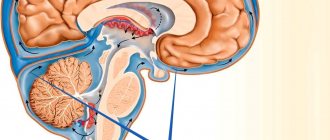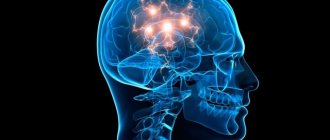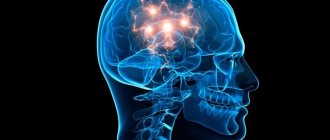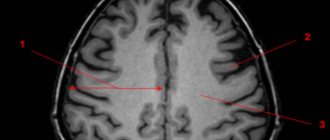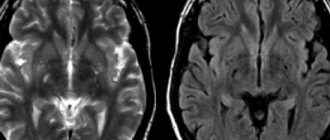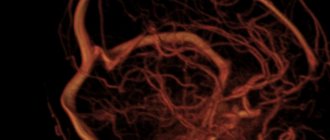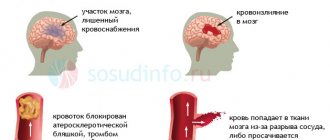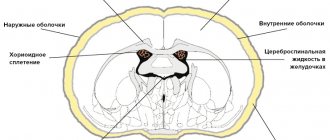Affective disorders are a group of mental disorders that are manifested by excessive expression of a person’s natural emotions or disruption of their dynamics (instability or stiffness). Affective disorders are spoken of in cases where emotional manifestations generally change the patient’s behavior and lead to his serious maladjustment.
Why Emotional Disorders Develop
Today, there are several theories of the occurrence of affective disorders. Each of them has the right to its existence, but there is no single reliable theory.
Genetic causes of emotional disorders may be an abnormal gene on chromosome 11. Scientists suggest the presence of recessive, dominant, and polygenic forms of affective disorders.
Neuroendocrine causes include dysfunction of the hypothalamic-pituitary system, limbic system and pineal gland. In this case, disruptions occur in the rhythm of the release of liberins, which stimulate the synthesis and entry into the blood of pituitary hormones, and melatonin, which regulates circadian rhythms. As a result, there is a change in the overall rhythm of the body, including the rhythm of sleep/wakefulness, eating, and sexual activity.
Stress (negative or distress and positive or eustress) can also lead to the development of affective disorders. Stress negatively affects the body, causing it to become overstrained and subsequently exhausted, and also contributes to the occurrence of depression in constitutionally predisposed individuals. The most significant stressors are the death of a child, death of a spouse, arguments, and loss of economic status.
>
>>>
We are glad to welcome you to the pages of our website!
Mother Nature has her own laws. Reluctance to fulfill one's parental duty, wars, various social disasters, abuse of children... In general, there is something to save them from. And then the care of such children passes to the state. One of the main mechanisms that would reduce the number of children in boarding schools is to find a new family for them.
During the existence of the institution, from 1995 to the present, 345 children have found shelter there. From the first days of living in our institution, the child does not lose hope that he may return to his biological family or acquire a new one in which he will be dear. But even if this dream is not destined to come true, then while he lives with us, his moral pains and anxieties will be compensated by the care and understanding of the center’s staff.
Dear guests of our site!
A team of students and teachers from the Kandalaksha Center for Assistance to Children Without Parental Care, “Bereg”, addresses you!
Every child left without parental care has the right and must live and be raised in a family. And even in cases where the family arrangement is difficult, the child must be surrounded with individual attention and care. And in addition to the staff of the school, the Center (former orphanage), such children should have a significant adult mentor or friend who helps them acquire skills for a future independent life. Being a mentor or just a good friend means communicating with a child, perhaps inviting them to visit, take a walk together, go to the cinema or to any event in the city. And at this time, listen to the child, give life advice on why it is the right thing to do and not otherwise. From work experience we can confidently say that even short-term communication with a child has a positive effect on his condition. And often with their problems, for help and advice, children turn to this person, while living in a government institution. We would be very happy if there were people willing to become a friend, a mentor for a child left without parental care. So that an adult is no longer an abstract source of attention and goodwill, but a specific person with certain qualities (marital status, age, profession, etc.). The activity of a mentor is not that he himself solves all the problems of the student in the shortest possible time, but in motivating the child to change his lifestyle and behavior.
If among your work colleagues, relatives, neighbors, acquaintances there are people (persons) who agree to be a friend, mentor, good acquaintance for our children - call, write, come.
OPEN DAY “COME, WE ARE WAITING” 09/01/2021
"Accessible environment" "LIVING TOGETHER"
State regional budgetary institution for orphans and children without parental care, “Kandalaksha Center for Assistance to Children without Parental Care, “Bereg”
Murmansk region, Kandalaksha, st. Pervomaiskaya, 8 A tel./fax: 8(81533) 9-30-24 E-mail: This email address is being protected from spambots. You must have JavaScript enabled to view it.
Reception schedule for citizens: Monday from 9.00 am to 5.12 pm
Director - Potapova Evgenia Pavlovna t. 8 (81533) 9-30-24
Deputy Director for HR - Tatyana Viktorovna Klepikova t. 8(81533) 9-25-36; E-mail: This email address is being protected from spambots. You must have JavaScript enabled to view it.
Deputy Director for ACh - Elesina Valentina Sergeevnatel/fax 8(81533) 9-46-01; E-mail: This email address is being protected from spambots. You must have JavaScript enabled to view it.
Organizations, institutions, citizens - not indifferent and ready to help, to provide attention to our center or to a child personally, can contact the director of the institution at a convenient time for them
Information about facts of corruption can be sent to the following email address: This email address is being protected from spambots.
You must have JavaScript enabled to view it. Attachments:
| Information | [ ] | 51 kB |
| New details from 01/01/2021 | [ ] | 74 kB |
Classification of affective disorders
1) Single depressive episode 2) Single manic episode 3) Bipolar affective disorder 4) Recurrent depressive disorder 5) Chronic mood disorders
— Cyclothymia — Dysthymia
6) Anxiety disorders
— Panic disorder — Generalized anxiety disorder — Agoraphobia — Social phobias — Specific (isolated) phobias
7) Somatoform disorders  Stress disorders 9) Age-related emotional spectrum disorders
Stress disorders 9) Age-related emotional spectrum disorders
Single depressive episode (F32)
Most often, a depressive episode develops between the ages of 20 and 40 and lasts at least 2 weeks. This is facilitated by factors such as a decrease in social level, divorce in men, the postpartum period in single mothers, death of relatives, family history of suicide, personal qualities (conscientiousness, anxiety and diligence), homosexuality, problems of sexual satisfaction, and other stressful events. In addition to genetic predisposition, the loss of social contacts and the cultivation of helplessness in the family during periods of stress play a significant role in the occurrence of depression.
Patients' mood and energy levels decrease, and their thinking slows down. They have difficulty remembering and focusing their attention on something, which leads to poor performance in school and work. This is especially noticeable among schoolchildren in puberty and among middle-aged people engaged in intellectual work. Physical activity also changes towards inhibition (up to stupor). Sometimes this behavior is perceived as laziness. Children and adolescents in a state of depression can be aggressive and conflictual.
Self-confidence and self-esteem decrease. These sensations cause the patient to distance himself from loved ones and increase his feelings of inferiority. Ideas of guilt and self-deprecation appear, the world around us is perceived in cold and gloomy tones, time drags on excessively long and painfully. The patient stops paying attention to himself. He is worried about various senestopathic and hypochondriacal experiences. As a result, ideas and actions arise related to auto-aggression: self-harm and suicide.
Suicide is a dangerous consequence of depression
According to psychiatrists, about 80% of patients suffering from depression have thought about committing suicide. About a quarter of them make at least one suicide attempt during a depressive episode, and in 15% it ends in suicide. A suicide attempt in psychiatry is equivalent to a myocardial infarction in cardiology: the patient necessarily requires urgent hospitalization in a specialized institution. If a person who decided to commit suicide failed to complete his plan, this does not mean that the danger to his life has passed.
Throughout the entire period when the patient is depressed, the risk of attempting suicide is too great. That is why, during the entire period of treatment for depression, until the depressive episode completely disappears, the patient should be in a place where the possibility of re-committing suicide is minimized. This can only be achieved in a hospital setting. Mandatory supervision of the patient is also necessary immediately after his discharge from a specialized institution, especially in cases where the patient still has thoughts of suicide.
Single manic episode (F30)
A single manic episode usually manifests itself as increased mood, faster thinking, and psychomotor agitation. Patients smile, do not complain about anything, and consider themselves absolutely healthy. They are optimistic, disdainful of difficulties and deny all possible problems. Their speech is fast, galloping, and with severe mania resembles “verbal okroshka.” Patients overestimate their own abilities, consider themselves attractive, and are constantly praised for their supposed talents.
They pay a lot of attention to their appearance, very often decorating themselves with medals and various badges. Women use excessively bright cosmetics and try to emphasize their own sexuality with the help of clothes. They waste money by purchasing useless goods. Such patients are active and fussy. They need very little time to recuperate. Despite the fact that patients cause a lot of inconvenience to others, they do not pose any threat to the health and lives of other people.
Classification of manic episodes
Depending on the severity, a manic episode manifests itself in the form of hypomania, mania without psychotic symptoms, and mania with psychotic symptoms. Hypomania (F30.0) is a mild mania characterized by prolonged severe changes in mood and behavior. It is not accompanied by delusions and hallucinations.
With mania without psychotic symptoms (F30.1), the patient's social behavior changes, which manifests itself in inappropriate actions. There are no psychotic symptoms. Mania with psychotic symptoms (F30.2) is a severe mania characterized by manic agitation and violent racing of ideas. In the clinic, secondary delusional ideas of greatness, high origin, value, hypereroticism appear, and hallucinatory calls or “voices” are possible.
Bipolar affective disorder (F31)
Previously, bipolar affective disorder was classified as manic-depressive psychosis. This pathology is characterized by repeated (more than two) episodes, during which mood and motor activity are significantly disturbed (from depressive retardation to manic hyperactivity). Exogenous factors usually do not have a significant effect on rhythm.
Attacks have some seasonality, most often exacerbations are observed in spring and autumn, although individual rhythms also occur. Manic states last from one to four months, the duration of depression ranges from one month to six months. The duration of intermissions in most cases ranges from six months to 2-3 years. As the pathology progresses, social decline is possible.
Recurrent depression (F33)
Recurrent depression is characterized by repeated depressive episodes of varying severity (mild, moderate or severe). The interictal period lasts more than two months. During this time there are no significant affective symptoms. The episode usually lasts from 3 months to 1 year. More often observed in women. Bouts of depression usually become longer in later life. A seasonal or individual rhythm is quite clearly visible. Clinical manifestations of recurrent depression are similar to endogenous depression. Additional stress has a significant impact on the severity of the disease.
Chronic mood disorders (F34)
These mental disorders are usually chronic and unstable. Each episode is not deep enough to be classified as hypomania or mild depression. Chronic mood disorders have been observed for years. Sometimes they last throughout the patient's life. Very often they can be aggravated by various life events, as well as stress. There are cyclothymia, dysthymia and other chronic affective disorders.
Cyclothymia (F34.0)
Cyclothymia is said to occur when there is seasonal mood swings for at least two years. In this case, alternating periods of subdepression and hypomania are observed; intermediate periods of normal mood may or may not be present. Affective episodes with cyclothymia are relatively mild. Moderate and severe forms of affective episodes are always absent. Episodes of “excessive fun” are possible; most often they occur after the abuse of alcoholic beverages.
Dysthymia (F34.1)
Dysthymia occurs in people belonging to the constitutionally depressed personality type. Patients suffering from this pathology are pessimistic, tearful, thoughtful, and uncommunicative. Depressive mood persists for at least 2 years. It can be permanent or periodic. The duration of normal mood rarely exceeds several weeks. With dysthymia, the level of depression is usually lower than with mild recurrent disorder.
Other chronic mood disorders (F34.8)
This category includes chronic mood disorders that are not of sufficient severity or duration to meet the criteria for dysthymia or cyclothymia. They also cannot be classified as a mild or moderate depressive episode. In addition, this includes some types of depression, which are closely related to stress.
Anxiety disorders
The following pathologies are usually classified as anxiety disorders: panic disorder, generalized anxiety disorder, social phobia, agoraphobia, isolated phobias, and disorders caused by mental stress.
Panic disorder (F41.0)
Panic disorder (panic attacks) occurs, as a rule, at the age of 20-25 and is characterized by the occurrence of panic attacks of horror, not associated with any external stimuli (they are assessed as “bolt from the blue”). The duration of attacks ranges from 5 minutes to half an hour. The horror during panic attacks can be so strong that patients do not understand where they are and who they are. Patients are afraid of going crazy, afraid of suffocating and dying, so they often try to escape.
Some make attempts to prevent the onset of attacks with the help of various psychotropic drugs and alcoholic beverages. Typically, panic attacks occur in situations where a person has limited freedom of movement or when, in his opinion, there is nowhere to wait for help. With constant stress, the frequency of attacks increases. In about a third of patients, attacks occur during sleep. This is due to an increase in carbon dioxide levels in the blood.
Generalized anxiety disorder (F41.1)
The main feature of generalized anxiety disorder is excessive, long-lasting anxiety, constantly supported by worry and anxious expectations. Concerns arise for various reasons that are not related to each other. As a rule, patients suffering from this disorder are aware of the excessiveness of their anxiety and the inability to cope with this disorder on their own. At the same time, they believe that this is exactly how it should be.
Social phobias (F40.1)
Social phobias are an unmotivated fear of performing public actions (for example, speaking in public), actions that are accompanied by attention from strangers, or simply communicating with strangers, as well as people of the opposite sex. The main experience in patients suffering from social phobia is the fear of being the center of attention, in an awkward or humiliating position.
Agoraphobia (F40.0)
The term “agoraphobia” refers not only to the fear of open spaces, but also of any situations in which the patient feels lonely, from which it is impossible to quickly get out and return to a safe place. It usually develops in patients suffering from panic disorder or those who have had sporadic panic attacks in the past. Those suffering from agoraphobia try to always stay at home, avoid crowds, any trips and do not dare to leave the house without the accompaniment of someone close to them.
Specific (isolated) phobias (F40.2)
Anxiety attacks with a specific phobia develop as a result of contact with certain situations or objects specific to each patient. The most common irritants are insects and animals (spiders, mice, etc.), natural phenomena such as hurricanes, thunderstorms, etc., the sight of blood, as well as various circumstances (a trip in an elevator, a flight on an airplane, etc.)
Somatoform disorders (F45)
This group of disorders is characterized by the presence of recurrent physical signs of various diseases with constant requirements for detailed medical examinations. However, additional studies have negative results, and doctors issue a conclusion that there is no physical basis for the existing complaints. Patients behave hysterically, try to attract attention, and are indignant at the inability to convince medical workers of the physical nature of their illness and the need for further examinations and examinations.
Stress disorders (F43)
This group includes disorders that arose as a result of the obvious influence of provoking factors. These factors include acute severe stress or prolonged trauma. Prolonged unpleasant circumstances or stressful events are the primary or predominant cause, without which the disorder could not have arisen.
Age-related emotional spectrum disorders
Mood disorders can occur at different stages of a person's life course. In women, in this regard, the critical age is considered to be the period of puberty, the postpartum period, and the menopause. In men, the risk of developing emotional disorders increases during adolescence, at the age of 20-30 years and after 40-50 years.
Treatment of mood disorders
Therapy for all emotional disorders includes treatment of depression and mania itself, as well as preventive measures. Treatment of affective disorders is carried out in three relatively independent stages. Stage one is the relief of acute affective symptoms. It consists of eliminating acute signs of disturbance in the emotional sphere and lasts until clinical or therapeutic remission is established. The second stage is stabilizing therapy. Its goal is the follow-up treatment of residual symptoms, the fight against emotional instability, early relapse and pre-relapse disorders. The third stage is preventive therapy. The task of this stage is to prevent the development of relapses of the pathology. Carried out on an outpatient basis.
Treatment for depression includes the use of a wide range of drugs depending on the depth of the disorder. For this purpose, fluoxetine, mianserin, Zoloft, lerivon, as well as tricyclic antidepressants and ECT are used. In addition, photon therapy and sleep deprivation treatment are used. Treatment of mania is carried out with increasing doses of lithium under strict control of their blood levels, antipsychotics or carbamazepines, and sometimes beta blockers. Lithium carbonate, sodium valproate or carbamazepine are used as maintenance therapy.
Treatment of anxiety-phobic disorders
Therapy for anxiety-phobic disorders consists of medication and psychotherapy. Drug treatment consists of the use of tranquilizers (phenazepam, mebicar), antidepressants (imipramine), nootropics, and MAO inhibitors. Psychotherapy includes psychoanalysis, as well as behavioral therapy methods: desensitization, hypnosis, auto-training, Gestalt therapy, neurolinguistic programming, etc.
Advice for relatives of someone suffering from mood disorders
Affective disorders are serious disorders that require specialist intervention. This is especially true for depression, which in most cases is accompanied by suicide attempts. Anyone thinking or talking about suicide needs immediate mental health care. It is important to know that the risk of committing suicide is highest in the initial stage of the disease. It follows from this that the earlier an affective disorder is diagnosed and effective methods of its treatment are determined, the less likely it is that a loved one will die as a result of suicide. If someone in your family suffers from depression or another emotional disorder, contact a psychiatrist and ask for help. Support your loved one both during the visit to the doctor and throughout all stages of treatment. Make sure that he takes prescribed medications on time and follows all medical recommendations.
We also recommend reading the article about prenatal depression.
Center for Speech Neuroscience
Neurologist and psychoneurologist
During initial examinations by a neurologist and psychoneurologist, doctors get to know the child and parents. Specialists obtain information about the history of the disease, assess the neurological and mental status of the patient, and, if necessary, conduct additional examination including functional diagnostics (EEG, ultrasound). Based on the examination results, complex drug therapy is prescribed.
Throughout the course of treatment, doctors evaluate the results of the therapy they prescribed and, if necessary, adjust the prescriptions.
Dynamic observation during the program.
Transcranial magnetic stimulation (TMS)
Transcranial magnetic stimulation (TMS), a recognized standard of neurorehabilitation in Europe, is used as an effective treatment method. This is a modern non-invasive technique for the treatment of neurological disorders. The principle of operation of TMS is the painless and safe effect of short-term magnetic pulses on the nerve cells of the cerebral cortex, due to which the intercellular interaction in the tissues of the cerebral cortex is improved.
Each child has his own medical history and unique pathogenesis. We do not “stamp” appointments and do not lead children according to a scheme that does not produce any results. We program the TMS device based on the electroencephalogram (EEG) data of a particular child so that the strength and frequency of the impulses have an optimal effect on his nervous system.
TMS in combination with therapy and corrective work prescribed by a neurologist allows you to achieve maximum results in a short time.
Daily (12 procedures, 5-6 days a week)
Speech pathologist-defectologist
As part of the course, a speech pathologist-defectologist works with speech disorders and higher mental functions (memory, attention, thinking, perception) identified in a particular child. Initially, the specialist identifies speech and cognitive disorders in the child, then develops a correction program, focusing on the conclusion of a speech neurologist and neuropsychiatrist.
The level of professionalism of our speech therapists-defectologists allows us to work with any disorders: violations of sound pronunciation (dysarthria, dyslalia, rhinolalia), violations of the pronunciation of syllabic structures, disturbances of the tempo and rhythm of speech (bradylalia, tachylalia, stuttering), voice (aphonia, dysphonia, prosody disorders), disorders of perception and understanding of speech, OHP, alalia, disorders of written speech, reading (dyslexia, dysgraphia, agraphia).
A speech pathologist-defectologist deals with the education and development of children with various problems with the pace of maturation and developmental deviations: mental retardation, delayed speech development, RDA, ASD, ADHD, alalia, tics, etc.
Twice a week (8 lessons)
Neuropsychologist
Classes with a pediatric neuropsychologist are necessary for emotional and volitional disorders. Our neuropsychologists are trained as medical clinical psychologists, so their methods take into account the functional structure of the brain of each individual child and his individual characteristics. A neuropsychologist selects a set of special techniques and activities that are aimed at restructuring the functional systems of the brain and the formation of higher mental functions:
- development of all types of perceptions - visual, auditory, tactile;
- development of all types of memory - auditory, visual, motor;
- development of thinking - synthesis, analysis, logical thinking, etc.;
- correction of the emotional sphere.
Twice a week (8 lessons)
Program cost: RUB 56,280.
Diagnosis of dementia
Based on the severity of symptoms, cognitive impairment is divided into:
- moderate cognitive impairment (self-care is preserved, neuropsychological testing reveals significant impairments);
- dementia - mild, moderate or severe (self-care is impaired, neuropsychological testing reveals significant impairments).
Some researchers identify a stage of mild (mild or subjective) cognitive impairment (MCI), when the patient actively complains of forgetfulness, inattention, and inability to cope with something, but neuropsychological testing determines normative indicators of higher brain functions (HMF) or individual minor difficulties in 1-2 cognitive areas, without disturbing the general cognitive status. Such conditions may be a manifestation of depression, increased anxiety, the result of situational fatigue, or the first preclinical signs of a neurodegenerative brain disease (for example, Alzheimer's disease).
If there are complaints of memory loss, clinical examination of patients is aimed at:
- establishing the fact and assessing the severity and nature of cognitive impairment: neuropsychological testing - targeted assessment of blocks of higher brain functions, determination of the so-called pattern of cognitive impairment, which has its own characteristics in various diseases;
- identification of other symptoms of damage to the nervous system: - thorough neurological examination; — a detailed analysis of the patient’s life history, including hereditary history, data on education, professional activities, bad habits, previous injuries and diseases; — instrumental and laboratory examination to assess the condition of the brain and risk factors for damage to the nervous system and exclude causes of potentially reversible dementia.
Before visiting a neurologist, if the patient has memory complaints, a number of examinations can be performed:
- UAC;
- KAM;
- detailed biochemical blood test (total protein, creatinine, glucose, glycated (glycosylated) hemoglobin, total and direct bilirubin, liver enzymes (AST, ALT, CK, ALP, GGT), total cholesterol, lipid spectrum, potassium, sodium, calcium, vitamin D, vitamin B12, folic acid, TSH);
- MRI of the brain without contrast on a device with a power of at least 1.5 Tesla, with the obligatory performance of coronal sections to assess the volume of the hippocampi (the results are best presented on disk in DICOM format);
- ECG;
- UZDS BCA.
It is also useful to analyze the following patient data:
- bad habits;
- list of medications taken regularly;
- list of usual food products;
- drinking diary;
- physical activity diary, daily routine.
Even with severe chronic disease, the earliest possible diagnosis of the disease and an integrated approach to treatment significantly improves the prognosis of patients and increases their life expectancy.


